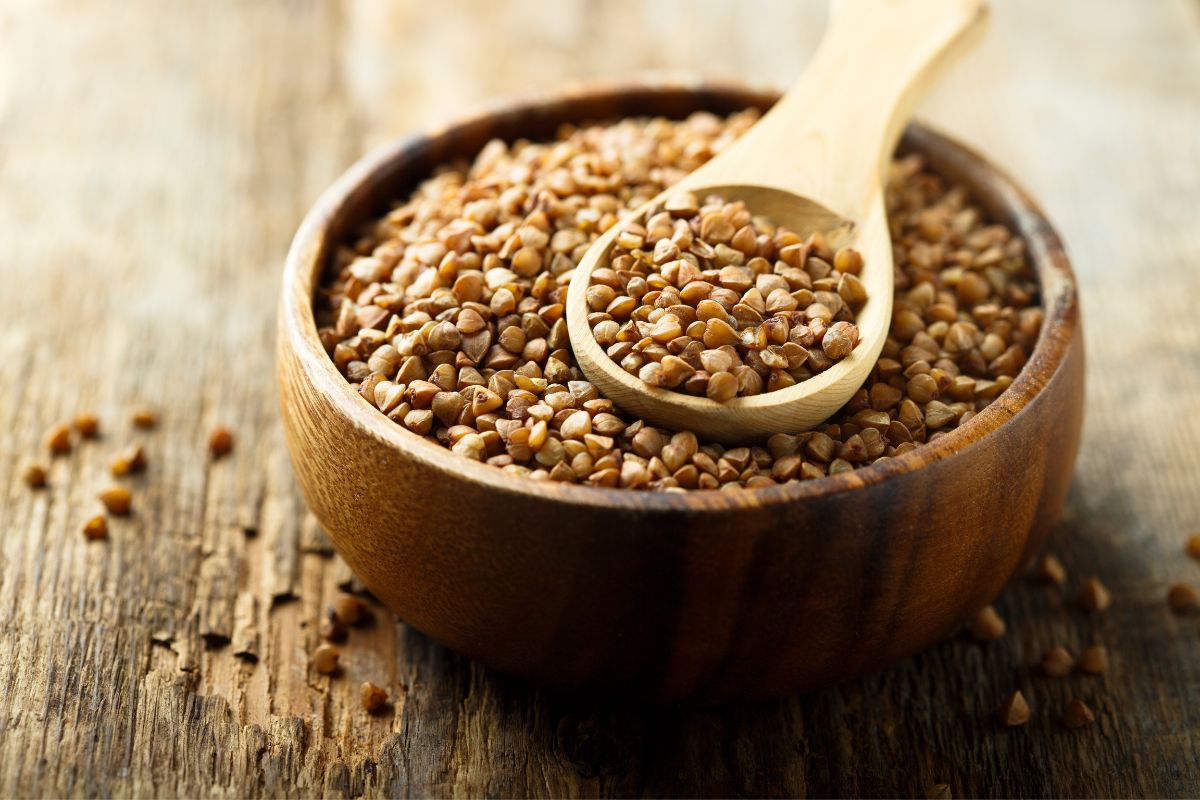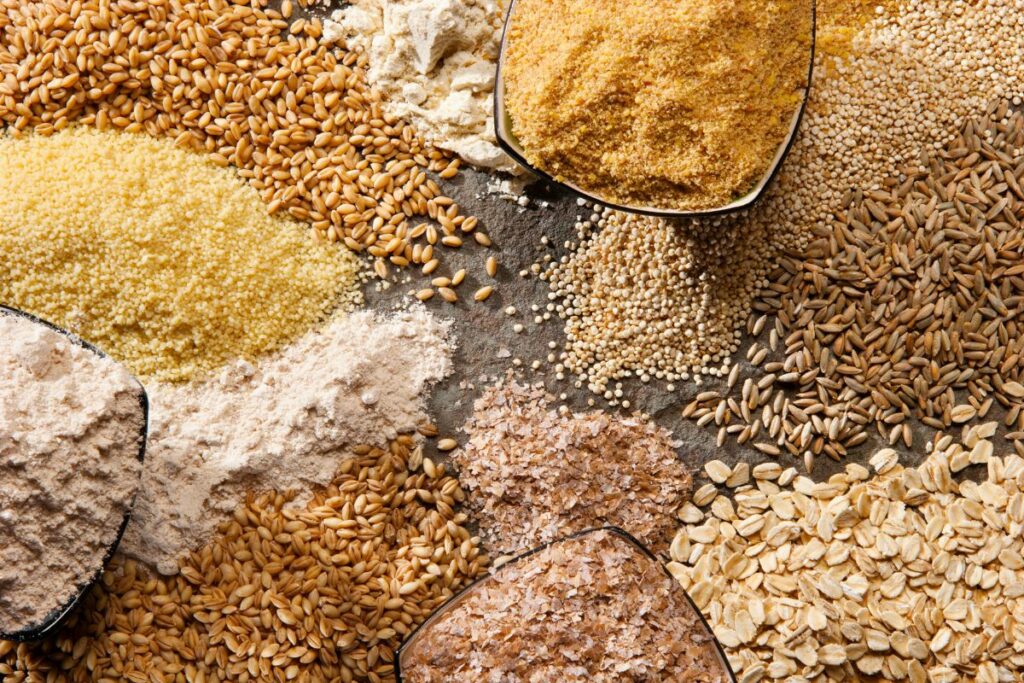Grains are dry, small, edible seeds that are grown on grass-like plants. These plants are called cereals.
They are a staple food across the entire world, and foods such as pasta, bread, pastries, oatmeal, rice, and crackers, are just a few examples of foods that are made from grains.
Some grains are known for being very healthy additions to diets, with some studies showing that they can reduce the risk of developing certain types of cancers and diseases.
This article will be discussing the healthiest grain, as well as other healthy grains you can consume.
Refined vs whole grains
Before we delve into healthy grains, it’s important to understand the difference between refined and whole grains, as this contributes to their health status.
Whole grains contain three parts. The bran refers to its outer layer, and it contains a good amount of minerals, antioxidants, and fiber.
The core of the grain is known as the germ. This area is where the carbs, proteins, fats, vitamins, minerals, antioxidants, and phytonutrients lie.
Lastly, the endosperm is the largest part and is mainly made up of carbs and protein.
As mentioned above, the whole grain contains all three parts, so the grain contains several minerals, nutrients, and antioxidants that are extremely beneficial for the body.
However, refined grains have the bran and germ removed, leaving the endosperm, meaning the grain won’t have as many nutrients and is mainly made up of starchy carbs.
Grains such as oats and brown rice are commonly eaten whole, but others, such as white rice, white bread, and white pasta, are normally refined.
What are the healthiest grains?
This article will now discuss what is considered to be the healthiest grain, as well as other grains that don’t fall too far behind in their health status.
Oats
Oats are considered to be among the healthiest whole grains you can have! They have the most nutrients per calorie compared to other grains, with a half-cup of oatmeal providing you with 38% of your daily iron, 17% of your vitamin B6 intake, as well as a ton of protein, calcium, and fiber!
However, you must ensure to choose whole oats, as some are more refined such as instant oatmeal. Your best bet is to go for rolled oats, steel-cut oats, or oat groats.
Rye
Rye is part of the wheat family but tends to be healthier as there are more minerals in it and fewer carbs.
If someone has issues with regulating their blood sugar, then foods made with rye are a better option as they don’t raise blood sugar levels like wheat does.
This grain also gives you a good amount of fiber, containing 22.6 grams of it in one 100-gram serving. This is almost 100% of adults’ recommended daily fiber consumption.
Whole wheat
Whole wheat is very versatile and because of this, it is a very popular ingredient in several foods such as noodles, baked goods, and pasta.
It contains the entire grain, which means you’ll be getting a lot of nutrients from consuming products made with whole wheat.
However, you must ensure that the foods you buy contain the words ‘whole wheat’, rather than just ‘wheat’.
Despite its versatility and health profile, there is some controversy around whole wheat due to its gluten content. This is a protein that not everyone can tolerate, and it causes inflammatory issues in those who are intolerant to it.
However, those who can tolerate gluten will benefit from the nutritional benefits of whole wheat.
Millet
While millet is a common ingredient in birdseed, it is also used in human cuisine. It is very nutritious, and contains a lot of potassium, iron, magnesium, zinc, B vitamins, and fiber!
Studies have shown that there are links between millet consumption and reduced inflammation in the body, and better blood sugar levels.
Another wonderful benefit is that millet is completely gluten-free, so those with intolerances to this protein are able to consume it without any issues.
Buckwheat

Despite the use of ‘wheat’ in the name, buckwheat does not contain any wheat. It comes in the form of seeds, and these seeds are filled with beneficial nutrients such as copper, magnesium, manganese, iron, B vitamins, and fiber.
It also contains resistant starch, which is a form of dietary fiber. This fiber makes its way down to the colon where it can feed the healthy bacteria. This is beneficial as it will help your body fight off infection and diseases.
Resistant starch has also been known for improving blood sugar levels, heart health, aiding in weight loss, and digestive health.
Whole barley
While barley is not as popular as other grains, it is still a very healthy option.
You can find whole (hulled) barley or pearled barley, but only hulled barley is the whole grain as it is not as processed.
It contains a good amount of nutrients and minerals, such as manganese, selenium, zinc, copper, magnesium, iron, potassium, fiber, and B vitamins.
However, barley does contain gluten, so those with an intolerance to this protein should avoid it.
Quinoa
Quinoa has grown in popularity in recent years and is classified as a superfood. It is one of the few plant-based foods that is considered a whole protein, as it contains all nine essential amino acids.
It is also filled with healthy nutrients and contains more vitamins, proteins, healthy fats, and fiber than other grains such as wheat, oats, and others.
This wonderful grain also contains many beneficial antioxidants such as kaempferol and quercetin.
These work well to protect the body from free radicals, which are harmful molecules that are linked to heart disease, inflammation, and cancer.
Brown rice
Brown rice is known for being a much healthier alternative to white rice as it is the whole grain variety.
This means that all three components of the bran, germ, and endosperm are kept together in the rice, unlike white rice, where the bran and germ are discarded.
Brown rice contains a lot of fiber, minerals, and antioxidants. Compared to white rice, which only contains 0.6 grams of fiber in 3.5 ounces, the same amount of brown rice contains 1.8 grams of fiber.
This rice variety also contains lignans. These are effective antioxidants that are known for helping reduce inflammation, blood pressure, and the risk of heart disease.
Another great benefit of brown rice is that it is completely gluten-free. This means that those who have an intolerance to gluten can add brown rice to their diet without experiencing any inflammatory issues.
Final thoughts
In summary, the healthiest grain is considered to be rolled oats. They contain a variety of nutrients, vitamins, and minerals, and they are minimally processed.
They also contain all three components of the bran, germ, and endosperm, making them a whole grain.
Other whole grains that can provide the body with a number of benefits include quinoa, as it contains all nine essential amino acids, brown rice, buckwheat, and rye.
When shopping for grains, you must always ensure the label states the food is ‘whole grain’ as this will ensure that your food will contain all three aspects of the bran, germ, and endosperm.








